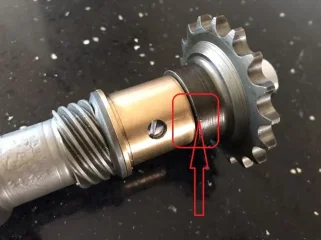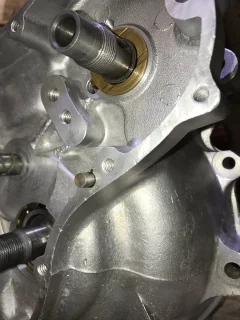I had a chance to take the timing sprocket off and found that basically the end play is controlled by difference between the shoulder on the cam and the bushing width. It looks like my bushing is worn and allowing a bit more play. Such is a 50 year old motor with (I assume) the original bushing...
View attachment 84927
As you can see the cam is proud of the bushing by about 0.030". Shown here the cam is pushed hard up against the bevel thrust washer. So I guess the fix for this would be to replace the timing side bush, which I probably won't do - unless the general consensus is "You have to be kidding - no one would run that!",
Hope it stays together.
-- David


